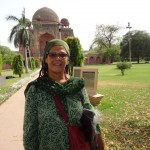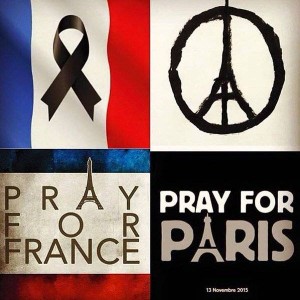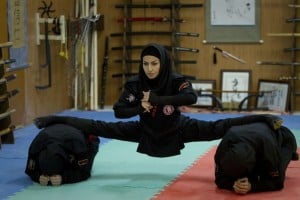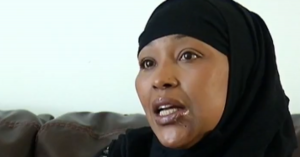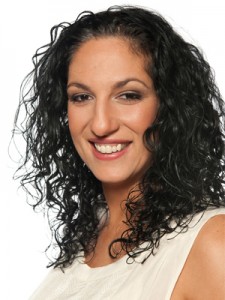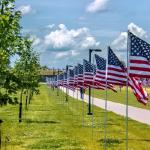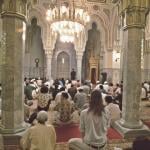“I am airing dirty laundry, because it needs to get washed” – Hind Makki
“Children of Adam, take your pleasantness to every Mosque.” (Qur’an 7:31)
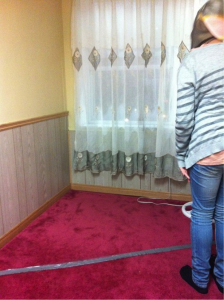
How often have we as Muslim women been enthusiastic about praying in a new space, and have attended a new masjid only to be discouraged by the lack of accommodation, area or accessibility for female worshippers?
How often have we been pleasantly surprised by the well-lit rooms and inviting, comfortable spaces for female worshippers?
An intrepid Muslimah blogger and advocate, Hind Makki, wanted to further examine the issue of Muslim women’s prayer spaces in mosques around the world. Her blog “Side Entrance” is a photoblog of masjids, musallahs and other prayer spaces for women from all over the world. Often, these spaces sharply contrast the ones allotted for men.
The command for prayer for Muslims is not gender-specific. It is universal. Yet the obvious disparities in prayer spaces are staggering, even within wealthy communities and well-established Islamic centers.
Hind’s blog is not the first discussion about inequalities in prayer spaces. Previously, there have been other blogs, numerous articles from different perspectives, opinion pieces, and even a documentary by Canadian filmmaker Zarqa Nawaz on this subject. Asra Nomani created an “Islamic Bill of Rights for Women in Mosques” in response to her own experience in American mosques.
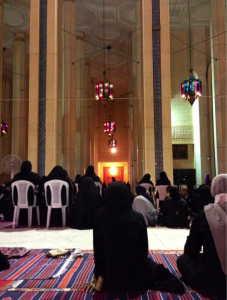
But Hind’s idea to include and accept submissions fosters inclusion and heightens the discussion. It allows women to capture the moment and their environment, and to illustrate the challenges and voice their concerns regarding mosque reform. Above all it, allows them to participate in commentary on MMP (“Muslim Male Privilege”) and the need to include women in the greater discussion.
Her blog has been featured in the Huffington Post and her work has been lauded by other Muslim women as a much-needed initiative.
This is a responsibility she takes quite seriously, despite some backlash. “Side Entrance” has, after all, received its fair share of criticisms, namely those who accuse Hind of airing “dirty laundry.”
I interviewed Hind recently and asked her a few questions regarding our communities’ linens, her replies to the critiques, and her ideas surrounding this inspiring project.
SA: Side Entrance has been hailed as a positive step for not only highlighting the need for Muslim women’s prayer space but for addressing MMP (“Muslim Male Privilege”) in the narrative about sapce issues. Do you think that was accidental?
HM: No, I’ve always intended for it to catalyze a discussion on Muslim male privilege. Before I officially started Side Entrance, I remember posting a picture on Facebook of an egregiously small prayer space in a central, downtown mosque and a lot of my male friends were shocked that this was my experience. I realized that many Muslim men are ready to be allies; however, they typically don’t know how bad some of these spaces are. When they find out about them, they are often surprised and dismayed about women’s spaces and want to do something to fix these issues. The thing about privilege is that the ones who are privileged rarely know they are. So Side Entrance is a way to open that discussion among men, too.
SA: Why did you decide to have a global campaign as opposed to a local or specifically domestic one? What are the benefits and drawbacks of including masjids from all over the world?
HM: That’s a good question. Since I live and work in the West, I am occupied by the role of the mosque in the West in developing and sustaining Muslim communities, primarily in North America. Mosques in the traditional Muslim world have generally not played the same role in sustaining Muslim identity, so I would argue that it is profoundly critical for Western mosques especially to be welcoming of, and cater to, women and children. Typically the mosques submissions I receive from the traditional Muslim world are massive, gorgeously designed, government-funded state mosques, with spaces for women that we could only dream about here in the West. That’s probably because those are the government mosques, where tourists would visit. Receiving photos from all over the Muslim world showcases the diversity – there are some countries where women never are allowed into a mosque; others that have literally elevated women in a balcony/mezzanine floor, others where women are in the same physical space as men – of how gender segregation is viewed by different Muslim cultures.
SA: Your project has been criticized for “airing dirty laundry.” How do you respond to those accusing “Side Entrance” of being a disservice?
HM: I am airing dirty laundry, because it needs to get washed 🙂 Side Entrance isn’t doing a disservice to Islam; mosques that are designed in a way that make women feel inferior and unwanted are doing the disservice. I’ve received so many private notes from women – especially converts and young women – about how they don’t attend mosques anymore, or don’t identify with their local Muslim community, because they are made to feel unwelcome in religious spaces. The mosque plays a certain role in Western Muslim communities – it’s the glue that holds us together, teaching Muslims about Islam, providing a space for Muslims to be in community with one another. If mosques neglect the needs of women to prioritize men’s needs, or are hostile toward women altogether to the point where women are leaving , that’s a greater disservice to our beautiful faith than my publishing a few negative photos and catalyzing an online discussion about the spaces women occupy in our mosques.
SA: A few other women have written and articulated about similar projects (for example, a Muslim Matters post called “The Penalty Box,” and Zarqa Nawaz’s documentary Me and the Mosque). Have other activists reached out to you to take this project to another level?
HM: Yes, many women leaders have reached out to me, which is incredibly humbling. Also, many professors have contacted me because they actually want to incorporate Side Entrance into their curricula. I have connected with the architect Maryam Eskandari of Miim Designs, and several other amazing leaders, to develop a mixed-gender conference and inshallah a movement, that examines the spaces – physical and otherwise – that women occupy in Muslim organizations, mosques, leadership structures and communities in North America. Watch this space!
SA: How many submissions have you received thus far? Are there any that you have not included? And why?
HM: I’ve received roughly 450 submissions so far via email, Tumblr and Facebook. The only photos I don’t include are the ones that are not submitted by the actual photographer – ones that were obviously taken off the internet. Side Entrance is a user-generated project that aims to showcase the experiences real women and men have in mosques, not of random pretty mosques someone got off the internet. Also, if the photo is clearly negative, I double check with the person who submitted it to make sure they want their name and the name of the mosque publicized.
SA: What are your hopes for “Side Entrance”?
HM: The point of Side Entrance isn’t to shame male mosque leaders, but to catalyze a discussion and work toward change. So, I hope the conversations it starts are mature and goal-oriented, mixed-gender and seen as an asset to the Muslim community, considering it highlights the experiences and views of women within the community itself. In my Side Entrance Wish List: 1) A community fund for US mosques that have a budgetary reasons for neglecting women’s spaces 2) Publishing a study of women’s spaces – with recommendations – in NA mosques, bearing in mind geography, budgets, ethnicity and ideology 3) Building a long-lasting, positive, mixed-gender conversation about gender and leadership in NA mosques 4) That Side Entrance grows!
SA: Do you have a favourite submission? If so, which one?
HM: I can’t choose just one! All the photos are meaningful to me in different ways. This Ramadan, I received a slew of submissions from various mosques in South Africa, which are truly stunning in the beauty and diversity of their congregations. I also recently received submissions from a few mosques in Argentina, including one that was built in 1933, simply designed, but obviously much beloved by its congregation – where men and women pray in the same small musalla. I suppose if I must, I’d choose a photo my friend Feda Jarad submitted, where she was praying in the Dome of the Rock.
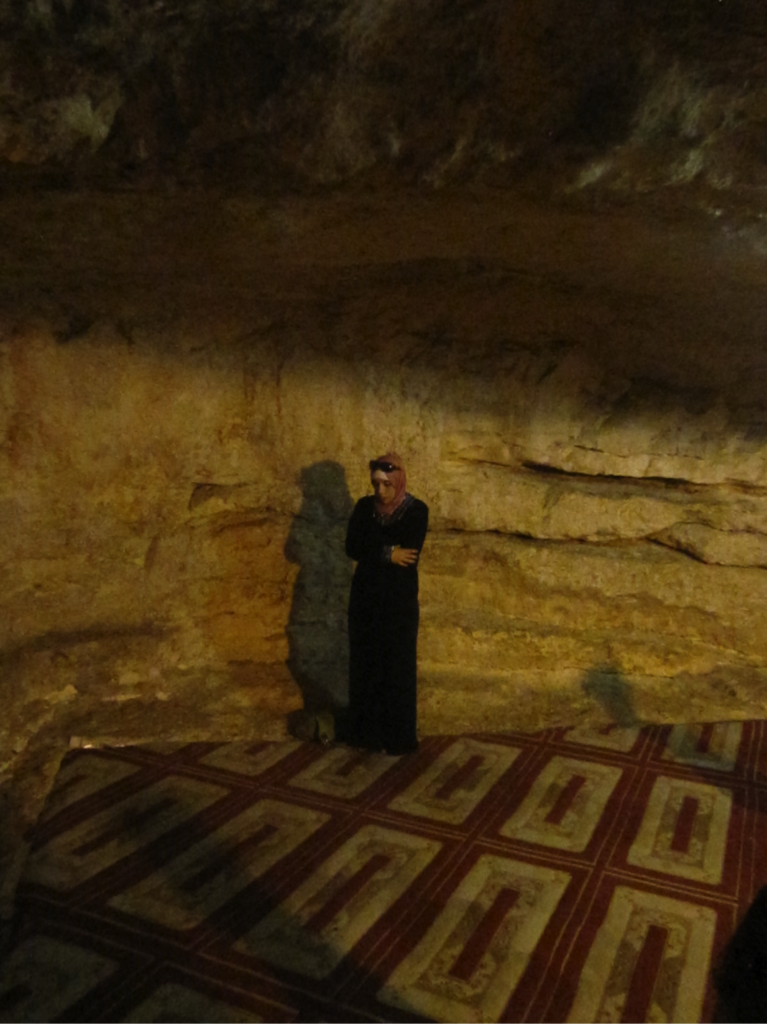
Here’s what she wrote about it:
“In the Dome of the Rock in Jerusalem, 95% of it is reserved and occupied by women. There are almost always women in there no matter what the hour is. There is one small section for men; coming through their designated door, men can walk around in the Dome to the stairs leading to the area under the rock which is believed the Prophet (S) prayed in before his ascent to Heaven. This is the only ‘mixed’ prayer area in the Dome. But the volunteer security personnel are very strict with the men’s movement in the Dome because literally there is always women sleeping in there and the women are comfortable in this area. Remember, it’s really hard to get to the Aqsa for the average Palestinian so there are people that will spend the entire day there and/or a couple of days. They don’t want the Dome to be completely void of men in case there is an emergency, though. It is very easy for the Israeli army to block the access ways to the Dome, cripple the compound area and isolate the Dome from the Aqsa.”
—
As an admirer of Hind Makki’s fearless and important project, I am not only interested in the response from masjids and boards but also the discussion that emerges from it.
I look forward to her collaborations and to seeing reforms not only in the physical and structural sense, but also the changes in mentality that surround all entrances and opportunities for Muslim women.

